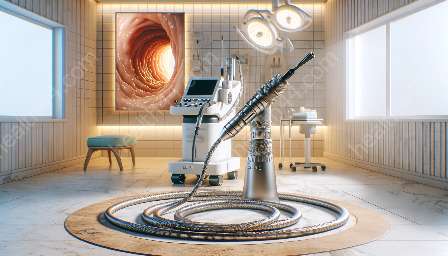Video endoscopes have revolutionized the field of medical devices and equipment, offering advanced capabilities for diagnostic and therapeutic procedures. In this comprehensive guide, we will delve into the key aspects of video endoscopes and uncover their impact on patient care and medical procedures.
The Evolution of Endoscopes
Endoscopes have been a fundamental tool in the field of medicine for decades, allowing healthcare professionals to visualize and perform procedures inside the body without invasive surgery. Traditional endoscopes consisted of a long, flexible tube with a light and camera at the tip, providing a view of the internal organs or cavities.
However, with the advent of video technology, endoscopes have undergone a significant transformation. Video endoscopes now incorporate high-resolution cameras and advanced imaging systems, enabling real-time visualization and recording of internal structures with unparalleled clarity.
Key Features of Video Endoscopes
Video endoscopes are equipped with cutting-edge features that enhance the diagnostic and therapeutic capabilities of healthcare professionals. Some of the key features include:
- High-Definition Imaging: Video endoscopes utilize high-definition cameras to capture detailed images of the internal organs or tissues, providing a clear view for accurate diagnosis and treatment planning.
- Flexible Manipulation: The flexible design of video endoscopes allows for precise maneuvering within the body, enabling access to hard-to-reach areas with minimal patient discomfort.
- Real-Time Video Capture: Unlike traditional endoscopes, video endoscopes can capture real-time video footage, allowing healthcare professionals to observe dynamic changes and perform interventions with greater precision.
- Integrated Lighting Systems: Video endoscopes are equipped with advanced lighting systems that ensure optimal visualization during procedures, even in challenging anatomical locations.
Applications in Diagnosis and Treatment
Video endoscopes play a crucial role in the diagnosis and treatment of various medical conditions across different specialties. Some of the primary applications include:
Gastroenterology:
In gastroenterology, video endoscopes are used for the inspection of the gastrointestinal tract, including the esophagus, stomach, and colon. They enable the detection of abnormalities such as polyps, ulcers, and tumors, allowing for targeted biopsies and therapeutic interventions.
Pulmonology:
Video endoscopes are employed in pulmonology to examine the airways and lungs, aiding in the diagnosis of respiratory disorders, lung infections, and tumors. They facilitate minimally invasive procedures such as bronchoscopy and provide visualization during interventions.
Urology:
In urology, video endoscopes are utilized for visualizing the urinary tract and performing procedures such as cystoscopy. They assist in the diagnosis and treatment of conditions such as urinary stones, bladder tumors, and urethral strictures.
Orthopedics:
Orthopedic surgeons utilize video endoscopes for arthroscopic procedures, allowing for the inspection and treatment of joint-related conditions, including cartilage injuries, ligament tears, and synovial disorders.
Advancements in Video Endoscope Technology
Recent advancements in video endoscope technology have further enhanced their capabilities and usability in medical practice. Some noteworthy advancements include:
- Miniaturization: Manufacturers have developed miniaturized video endoscopes that offer improved maneuverability and reduced patient discomfort during procedures.
- Wireless Connectivity: Some video endoscopes now feature wireless connectivity, allowing for seamless integration with digital imaging systems and data management platforms.
- Artificial Intelligence Integration: Cutting-edge video endoscopes leverage artificial intelligence algorithms to assist healthcare professionals in real-time image analysis, aiding in the detection of abnormalities and guiding treatment decisions.
- Enhanced Ergonomics: Modern video endoscopes are designed with ergonomic features to enhance user comfort and reduce fatigue during prolonged procedures.
The Impact of Video Endoscopes
Video endoscopes have significantly elevated the standard of care in healthcare, offering superior visualization and procedural capabilities. Their impact extends to various aspects of the medical field:
Patient Outcomes:
Video endoscopes contribute to improved patient outcomes through precise diagnosis, targeted interventions, and reduced post-operative complications, leading to enhanced recovery and quality of life.
Efficiency and Precision:
Healthcare providers benefit from the enhanced efficiency and precision offered by video endoscopes, streamlining diagnostic processes and enabling tailored treatment strategies for patients.
Training and Education:
Video endoscopes have become invaluable tools for medical training and education, allowing healthcare professionals to enhance their procedural skills through realistic simulation and interactive learning experiences.
Research and Innovation:
The use of video endoscopes has fueled ongoing research and innovation in medical technology, leading to the development of new diagnostic modalities and minimally invasive treatment options.
Looking Ahead
As technology continues to advance, the future of video endoscopes holds promise for further enhancements in imaging quality, procedural capabilities, and integration with digital healthcare systems. The continuous evolution of video endoscope technology is poised to shape the future of medical devices and equipment, ultimately benefiting patients and healthcare providers worldwide.


